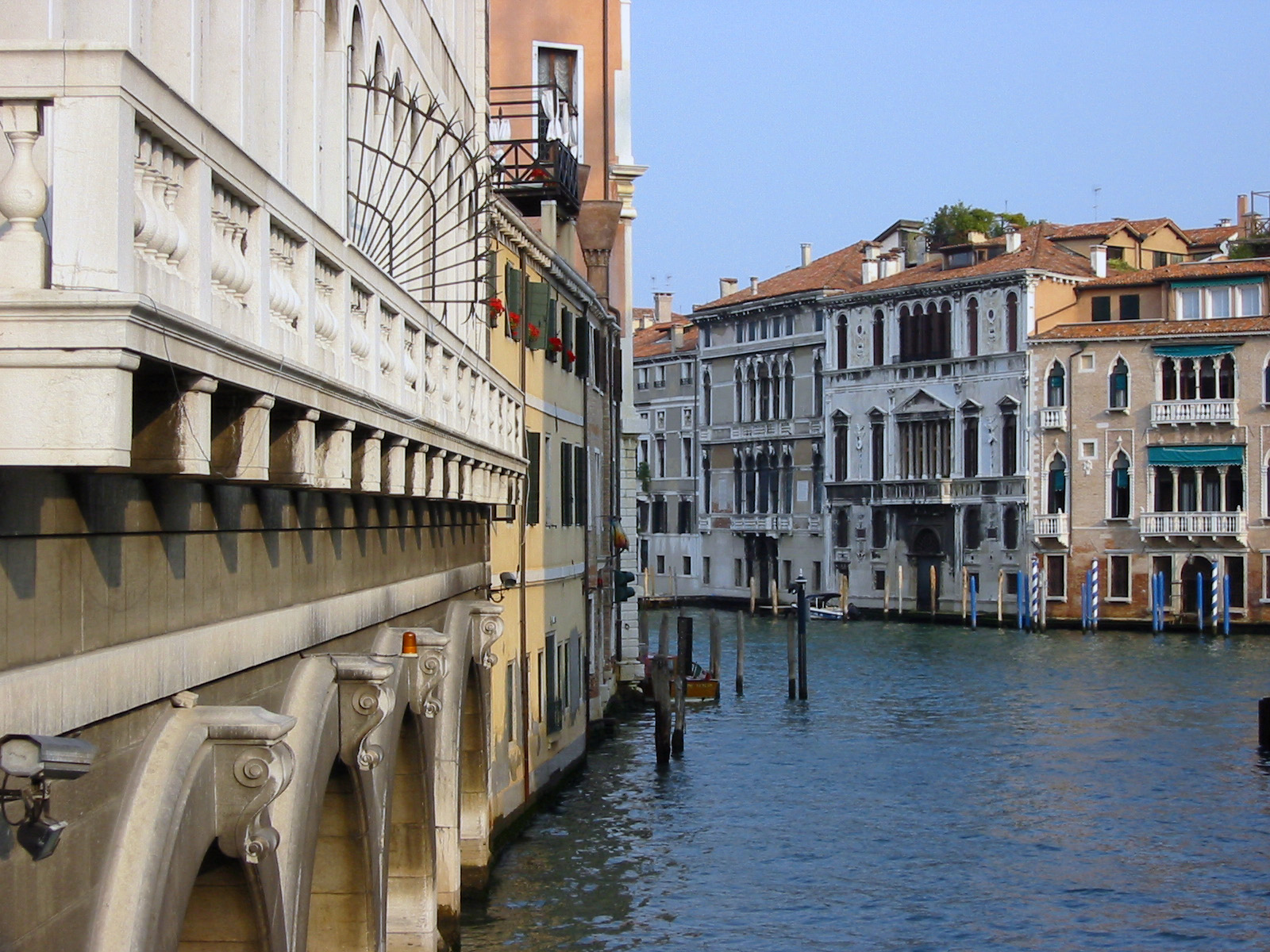 The stretch of the Adriatic Coast from Pescara to Venice is flat, the water is bile colored acquamarine and the high rise apartment buildings and new condominiums springing up the coast make it look more like Miami beach than Italy. But at the end of the ride is one of the most beautiful cities in the world.
The stretch of the Adriatic Coast from Pescara to Venice is flat, the water is bile colored acquamarine and the high rise apartment buildings and new condominiums springing up the coast make it look more like Miami beach than Italy. But at the end of the ride is one of the most beautiful cities in the world.
Either there have been a few improvements in getting into the city from the parking garage, or it’s just been too long since we’ve been here. But parking at the Tronchetto garage was a breeze and barely a 5 minute walk to get to the traghetto (water bus). And to make it even easier, our hotel were less than a 5 minute walk from the traghetto stop at the Accademia, one stop before Piazza San Marco.
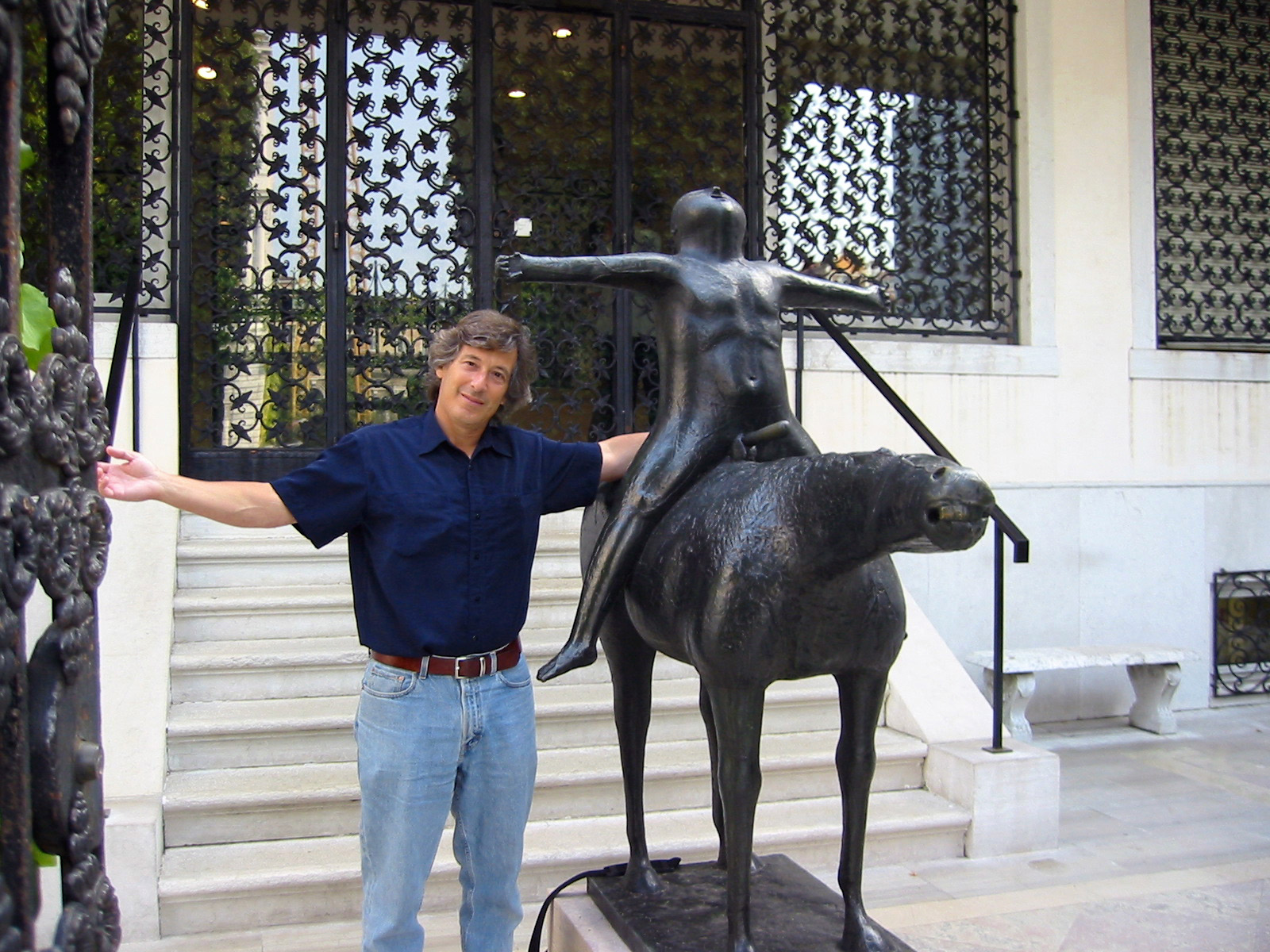 We’re staying in “The Charming Hotel DD 724”. As in all European advertising, Charming refers to the size and not the décor. Although the front door is barely big enough to get through, our room (a junior suite) is about 20 m2 or 220 sq ft. It has 2 windows that look out onto a small canal, which has currently been drained in order to repair the nearby building foundations. The DD stands for Dorsoduro, a wonderful residential area on the other side of the Grand Canal from the Piazza San Marco. Actually, we are a few doors down from Peggy Guggenheim’s old villa, now a Guggenheim Museum. In fact, when we rented the room, we were told we could have a room with a view of the Guggenheim Gardens for one night or the larger room with a view of the canal for two nights. We opted for the canal (although they forgot to tell us it was drained). However, we did ask to see the view to the garden, thinking we’d be able to sit in the room and view the wonderful sculpture garden below, but when we opened the curtain obstructing the view, all we saw were a few trees. Antonella, our host, assured us that the trees were really in the Guggenheim Garden.
We’re staying in “The Charming Hotel DD 724”. As in all European advertising, Charming refers to the size and not the décor. Although the front door is barely big enough to get through, our room (a junior suite) is about 20 m2 or 220 sq ft. It has 2 windows that look out onto a small canal, which has currently been drained in order to repair the nearby building foundations. The DD stands for Dorsoduro, a wonderful residential area on the other side of the Grand Canal from the Piazza San Marco. Actually, we are a few doors down from Peggy Guggenheim’s old villa, now a Guggenheim Museum. In fact, when we rented the room, we were told we could have a room with a view of the Guggenheim Gardens for one night or the larger room with a view of the canal for two nights. We opted for the canal (although they forgot to tell us it was drained). However, we did ask to see the view to the garden, thinking we’d be able to sit in the room and view the wonderful sculpture garden below, but when we opened the curtain obstructing the view, all we saw were a few trees. Antonella, our host, assured us that the trees were really in the Guggenheim Garden.
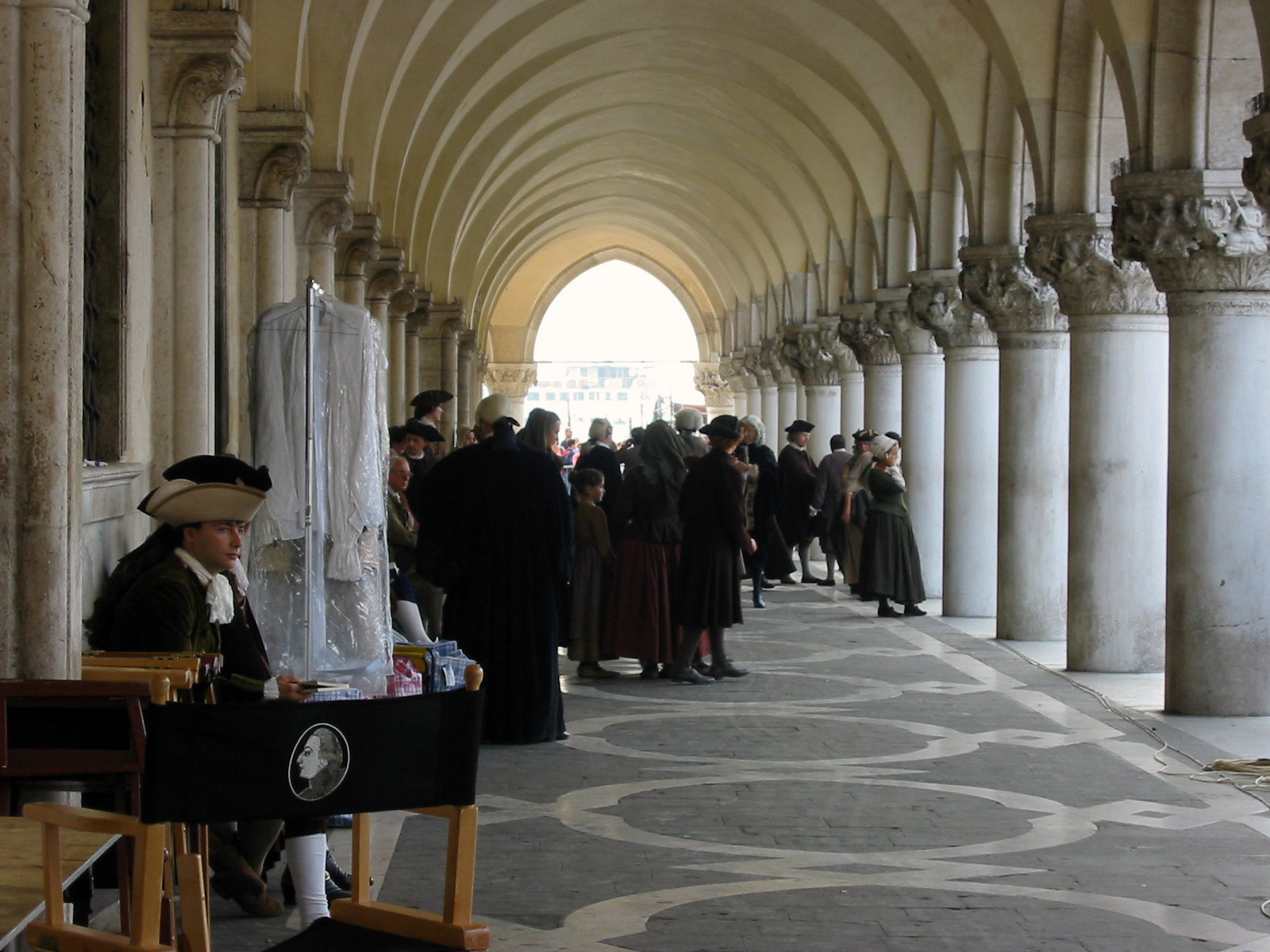 The Dorsoduro is where Woody Allen and Soon Yi have a villa and as we’d walk along the canals, we’d look at the doorways to see if the word Allen is written below the doorbell. No luck so far. But we did have a few celebrity citings. We saw Oliver Platt twice. And today, as we walked though the Piazza San Marco, we saw the filming of the movie “Casanova”. As we were leaving the Ducale Palace (highly recommended), we saw Heath Ledger getting his makeup and hair done as he was laughing on his cell phone. Apparently Jeremy Irons and Lena Olin are also in this film, and although they never made an appearance, we did see lots of costumed extras, lots of sets, carriages, horses and more backstage and security personnel that at a rock concert, which was obviously required since the spectator crowd was getting larger than the production. Funny, there was a sign posted by Gondola productions, saying that if you (the spectator) are in the area during the filming, they have the right to use you in the film without compensation. However, in this case, the costuming would be all wrong.
The Dorsoduro is where Woody Allen and Soon Yi have a villa and as we’d walk along the canals, we’d look at the doorways to see if the word Allen is written below the doorbell. No luck so far. But we did have a few celebrity citings. We saw Oliver Platt twice. And today, as we walked though the Piazza San Marco, we saw the filming of the movie “Casanova”. As we were leaving the Ducale Palace (highly recommended), we saw Heath Ledger getting his makeup and hair done as he was laughing on his cell phone. Apparently Jeremy Irons and Lena Olin are also in this film, and although they never made an appearance, we did see lots of costumed extras, lots of sets, carriages, horses and more backstage and security personnel that at a rock concert, which was obviously required since the spectator crowd was getting larger than the production. Funny, there was a sign posted by Gondola productions, saying that if you (the spectator) are in the area during the filming, they have the right to use you in the film without compensation. However, in this case, the costuming would be all wrong.
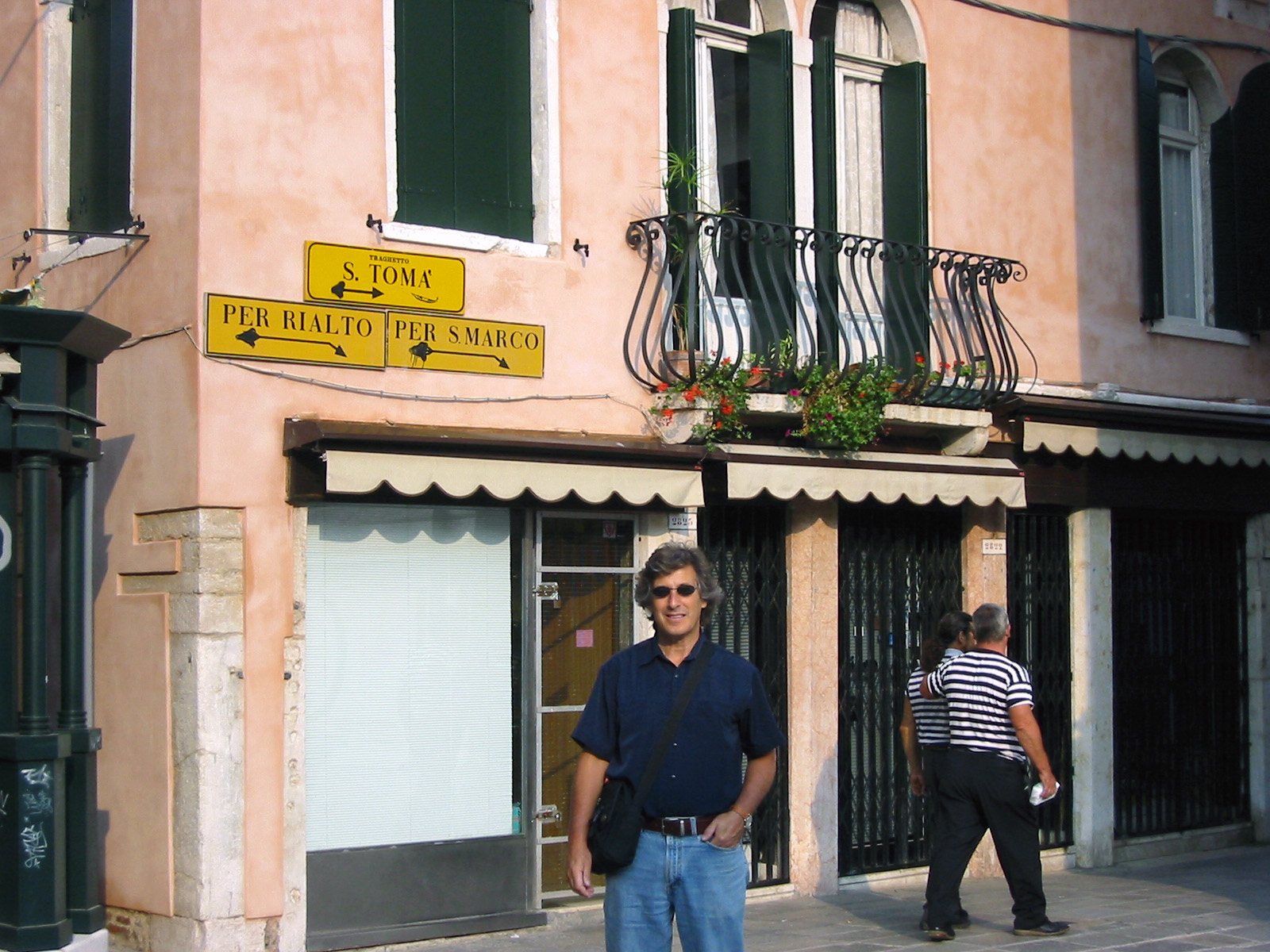 This is a small city. Most of the canals are small, the streets are small, most of the buildings are small, but nonetheless, thousands of tourists come here every year. Any guide book will tell you that part of the charm of Venice is to just get lost in the small streets. It’s what Venice is all about. However, for those who don’t like getting lost, there are convenient signs posted along the way from the Rialto Bridge to Pazza St Marco to the Accademia. And sure enough, these norrow paths loaded with tourist shops are literally packed with people at all hours of the day and night. By the way, the only Piazza in Venice is San Marco. Any other square is referred to as “Campo”.
This is a small city. Most of the canals are small, the streets are small, most of the buildings are small, but nonetheless, thousands of tourists come here every year. Any guide book will tell you that part of the charm of Venice is to just get lost in the small streets. It’s what Venice is all about. However, for those who don’t like getting lost, there are convenient signs posted along the way from the Rialto Bridge to Pazza St Marco to the Accademia. And sure enough, these norrow paths loaded with tourist shops are literally packed with people at all hours of the day and night. By the way, the only Piazza in Venice is San Marco. Any other square is referred to as “Campo”.
The thousands of small shops selling murano glass, venetian masks, venetian paper are a bit exhausting and after a while it’s hard to differentiate between good murano glass and tourist murano glass. But we did manage to leave the city with 3 glass cherries and 2 small glass snakes.
The narrow streets and large Campi sqaures are perfect for street music and in Venice there is no shortage of really talented street musicians. We stopped in one Campo to listen to a guitarist playing the most beautiful samba music, a few hundred meters further on, we were treated to we were treated to a classical street concert of violin, bass and eastern European hammer dulcimer. In the next square we heard a glass harmonica concert of 1950’s Italian pop music. I’ve seen different versions of this instrument, a collection of crystal glasses of various sizes. The musician would tune them by adding various levels of water into each glass. This Glass Harmonica in Venice was made from a very odd collection of crystal, some cut glass, some crystal goblets, some new and some old. The result was enchanting. By the way, many people think the instrument was first created by Benjamin Franklin. Not true. Although Franklin did invent a mechanized version of the instrument, the invention credit belongs to an irishman named Richard Pockrich who in 1741 created the first known version called the “angelic organ”. Although this is still considered a novelty instrument, Mozart, Beethoven and Handel and many others composed music for it.
We’ve been to Venice a number of times and although there are a lot of restaurants, I can never remember a meal I really liked. But at last we found the restaurant called Osteria Santa Marina, in the Campo Santa Marina, located between the Rialto Bridge and the Fenice Opera House. This is a local secret, no tourists. We dined on fresh St Pietro (John Dory) in an orange pumpkin sauce and fresh tuna, lightly seared in a citrus and cardamom sauce. We also discovered some amazing Primativo wines from the Puglia district in the south of Italy. The primativo grape is supposedly the origin of the zinfindel wines in California. Although we could taste some similarities, the primativo wines were more fragrant and bigger in flavor.
 Veneto
Veneto
It was only a 90 minute drive from the parking garage in Venice to our next destination in the mountain town of Folina. We had booked 4 nights in the Hotel dei Chiostri with great hopes of not only exploring some of the Palladian splendors of the Veneto but also sticking our toes next door in Slovenia.
Hotel dei Choistri is a beautiful new hotel and extension of the Relais Chateaux Villa Abbazia. The Abbazia, a very expensive hotel is on one side of the square, while the Hotel Dei Choistri, a contemporary artsy (and lower priced) hotel is on the other side of the square. They are equally beautiful in their design and both owned by the same family. It was explained to us that the Relais Chateaux hotel is more for Americans who like pay more money and the Dei Choistri is more for Germans who like to pay less money. And so there you have it.
Although the room was very beautiful, it did have a few strange design choices like a pass through window between the bed area and the bathroom. Yes, there was a door closing the bathroom off, but then there was this strange opening either put there for light or ventilation, although who wants ventilation from the bathroom to the bed. The other problem was that the church across the square let us know it was there every 30 minutes. It looked beautiful, but come on. At least stop the bells after midnight.
That night we had dinner at a local grill house, seated in front of the large hearth. For any of you who have ever seen a medieval fireplace you might have an idea of the size. If not, let’s just say the mantel was around 7’ high and under the mantel was all flame. A steel basket was filled with hard wood. As the flame consumed the wood, the coals would fall through the steel ribs and rested under the horizontal cooking grill, where steaks and chops cooked away. I can’t remember the last time I had a steak cooked over a wood fire. It was delicious.
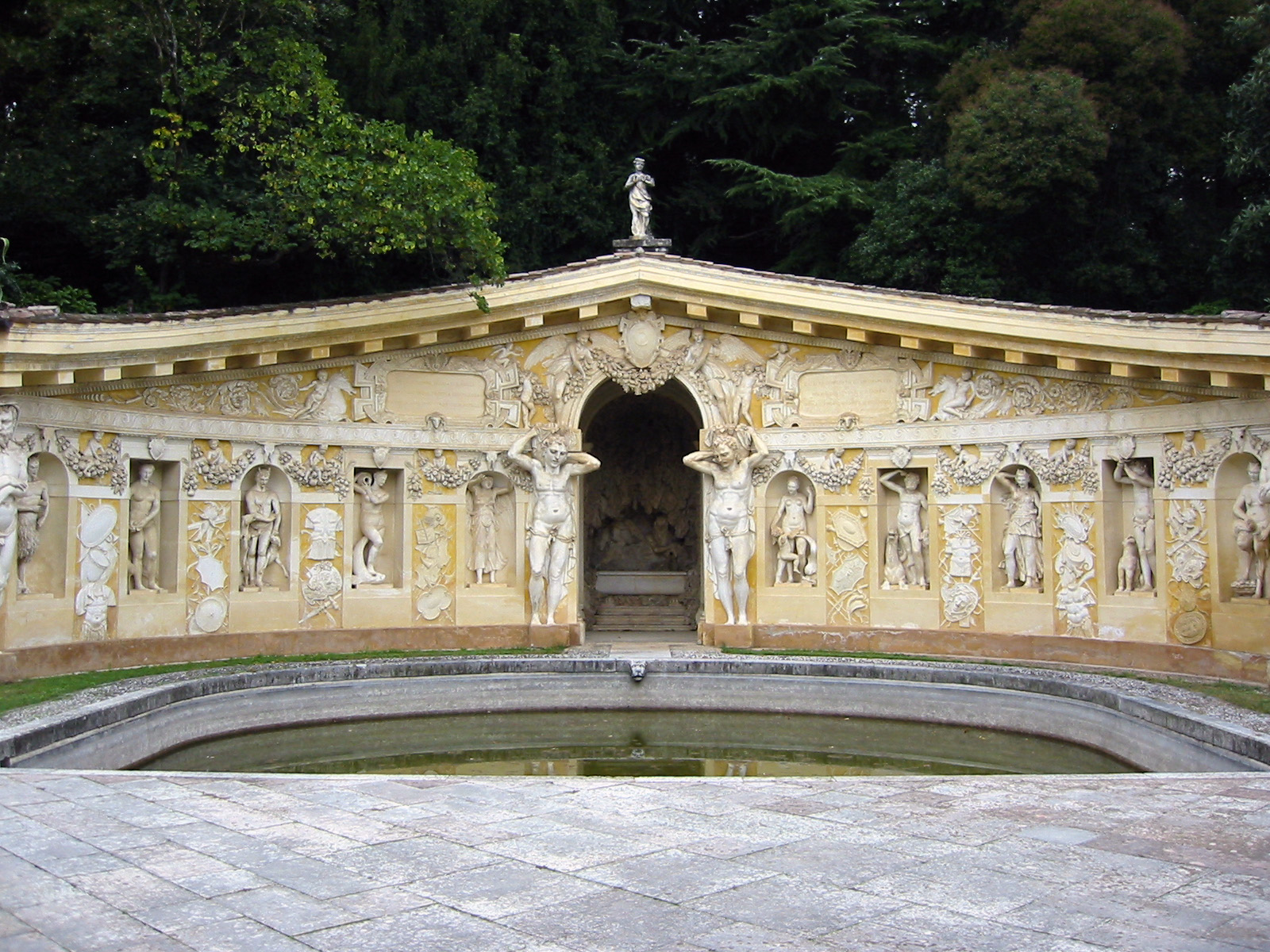 We started our tour of the Veneto with the Villa Barbaro, a joint project between Andrea Palladio and Paolo Veronese. For those of you who aren’t familiar with Palladio’s work, the US Capitol building in Washington DC is based on a classic Palladio design.
We started our tour of the Veneto with the Villa Barbaro, a joint project between Andrea Palladio and Paolo Veronese. For those of you who aren’t familiar with Palladio’s work, the US Capitol building in Washington DC is based on a classic Palladio design.
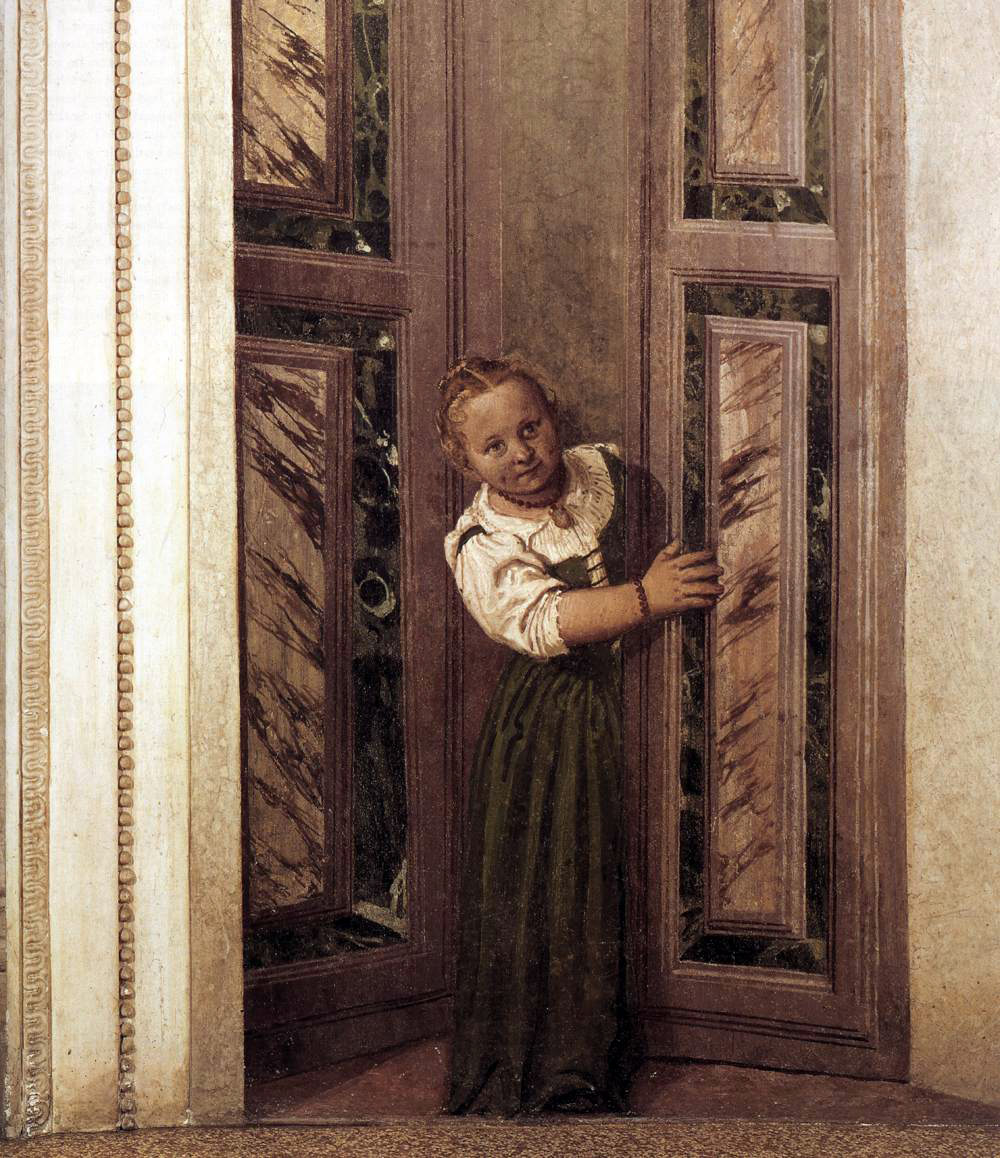 The architecture here is Palladio at his best, but the fun really begins when you see the Veronese frescoes painted in 1560-62. There are the usual mythological allegories but then Veronese places the family in a tromp l’oeil setting with the young sons tormenting each other, parrots resting on the balcony, dogs barking and the lady of the house looking over the scene in perpetuity. Other rooms have painted dogs sneaking out from behind painted columns and a young girl leaning through a painted doorway welcoming guests. Even though we had to share the experience with a noisy and rude Russian tour group, we couldn’t stop smiling. What a gem.
The architecture here is Palladio at his best, but the fun really begins when you see the Veronese frescoes painted in 1560-62. There are the usual mythological allegories but then Veronese places the family in a tromp l’oeil setting with the young sons tormenting each other, parrots resting on the balcony, dogs barking and the lady of the house looking over the scene in perpetuity. Other rooms have painted dogs sneaking out from behind painted columns and a young girl leaning through a painted doorway welcoming guests. Even though we had to share the experience with a noisy and rude Russian tour group, we couldn’t stop smiling. What a gem.
After Villa Barabaro, we drove up into the medieval mountain town of Asolo who pretty much gained it’s fame when Queen Catherine of Cypress was exiled here in the 15th century. Not a bad place to be exiled to. In the 19th century Robert Browning wrote volumes of poetry to this view of a hundred horizons. Now it’s one of the most beautiful hill towns in all of Italy. Of course, there must be a thousand hill towns in Italy that claim this distinction.
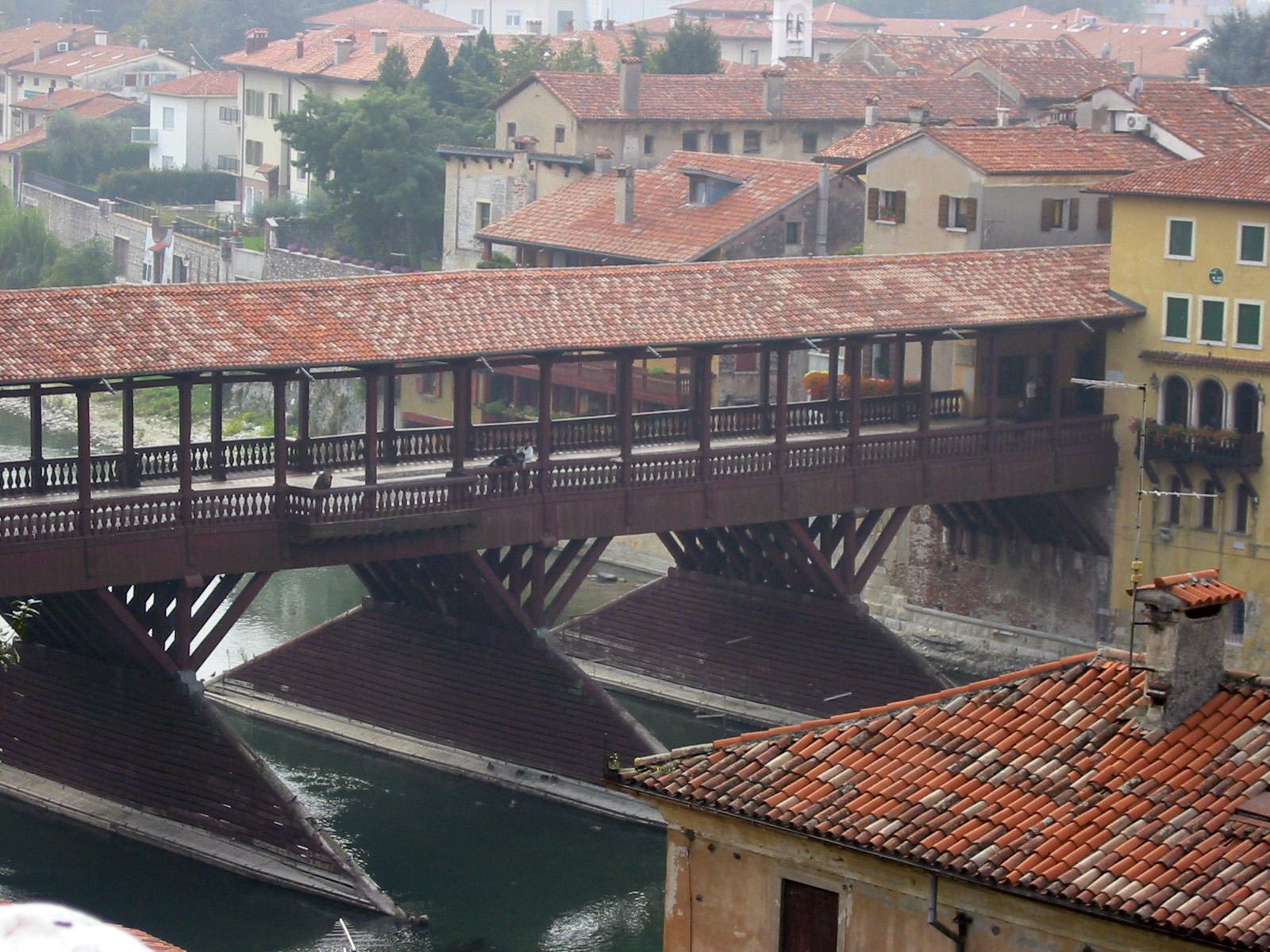 Bassono del Grappa is the home of that clear, high voltage alcohol that so many Italians are so passionate about. The bottles alone are great art pieces. The alcohol can get up to over 50% or over 100 proof. This distillation of grape skins, seeds and stems supposedly originated here in Bassono del Grappa in the 2nd century when a Roman soldier first tried his hand at it using distilling equipment he stole from the Egyptians.
Bassono del Grappa is the home of that clear, high voltage alcohol that so many Italians are so passionate about. The bottles alone are great art pieces. The alcohol can get up to over 50% or over 100 proof. This distillation of grape skins, seeds and stems supposedly originated here in Bassono del Grappa in the 2nd century when a Roman soldier first tried his hand at it using distilling equipment he stole from the Egyptians.
In World War I, an Alpine Italian captain described his love for grappa with the following sentiment:
Grappa is like a mule; it has no ancestors and no hope of descendants; it zigzags through you like a mule zigzags through the mountains; if you’re tired you can hang onto it, if they shoot, you can use it as a shield; if it’s too sunny, you can sleep under it; you can speak to it and it’ll answer; cry and be consoled. And if you really have decided to die, it will take you off happily.
The other famous sight in Bassono is the famous wooden pontoon bridge designed by Palladio in 1569. The bridge was destroyed during a bombing attack in World War II but it was rebuilt thanks to money collected by the Alpini, the elite mountain fighters of the Italian Army. In fact, the bridge is now named the Ponte degli Alpini and it’s a favorite grappa hole for the Alpini to come and have a drink or two.
The Veneto is also famous for the vineyards clinging the steep hillsides that yield Prosecco, Valpolicella and Soave wines. It looked like the grape pickers would need to balance themselves with climbing ropes and caribiners or literally fall off the mountain.
You must be logged in to post a comment.